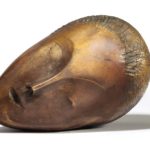WASHINGTON, DC.- Researching animals in the wild can be challenging, especially if it involves a rare or elusive species like the giant panda or the clouded leopard. To remedy this, scientists rely heavily on camera traps—automated cameras with motion sensors. Left to photograph what passes in front of them, the cameras record the diversity and very often the behavior of animals around the world. The Smithsonian has brought together more than 202,000 wildlife photos from seven projects conducted by Smithsonian researchers and their colleagues into one searchable website, siwild.si.edu. The new website allows the public to see exactly what scientists see in their research—photos of wildlife captured at close range, from the head-on stare of a jaguar in Peru to inside the mouth of a giant panda in China. “This site provides the public a glimpse of what the scientist sees when surveying remote places,” said Will
Candid Cameras Give a Chance to See Wildlife as a Scientist Does
Back To Top







